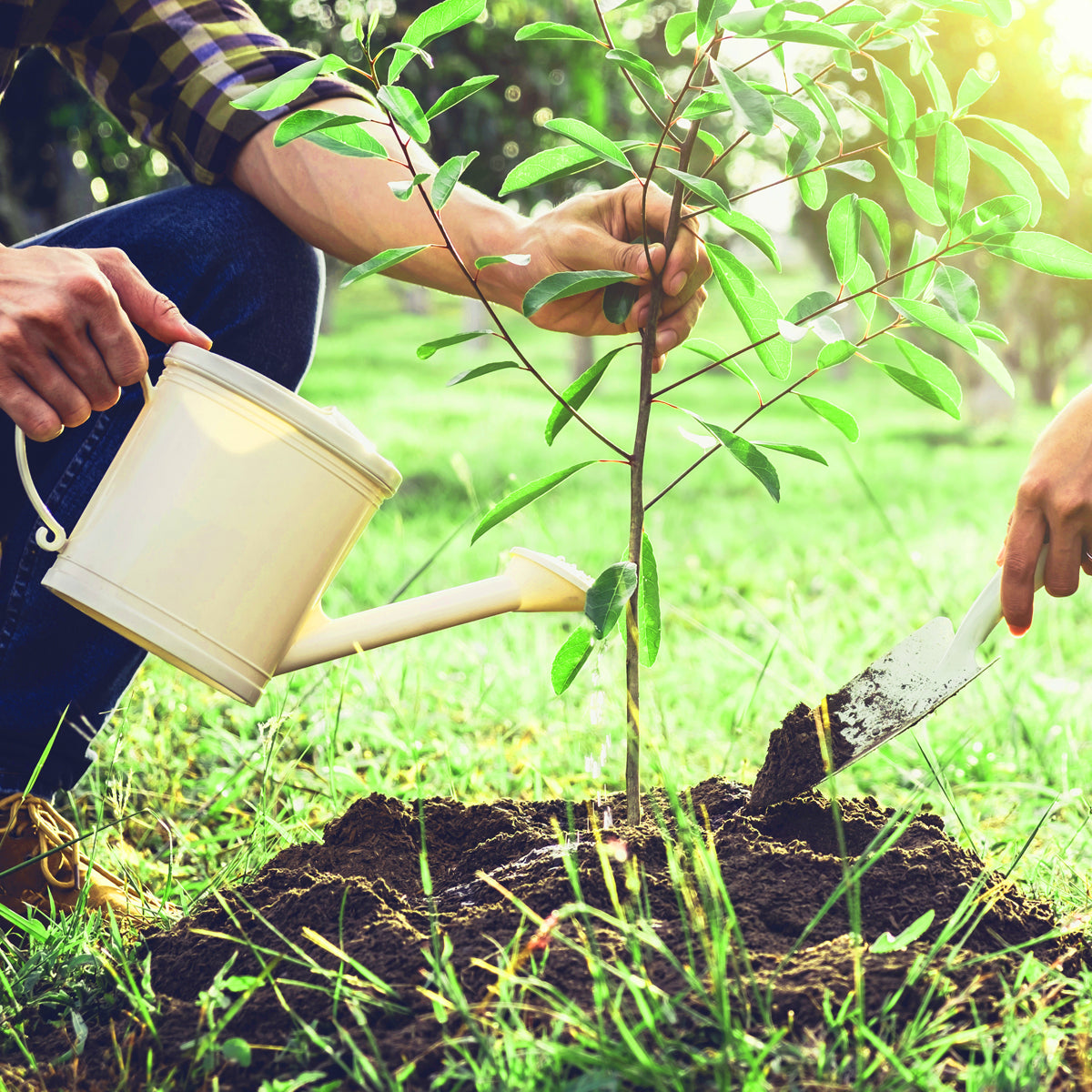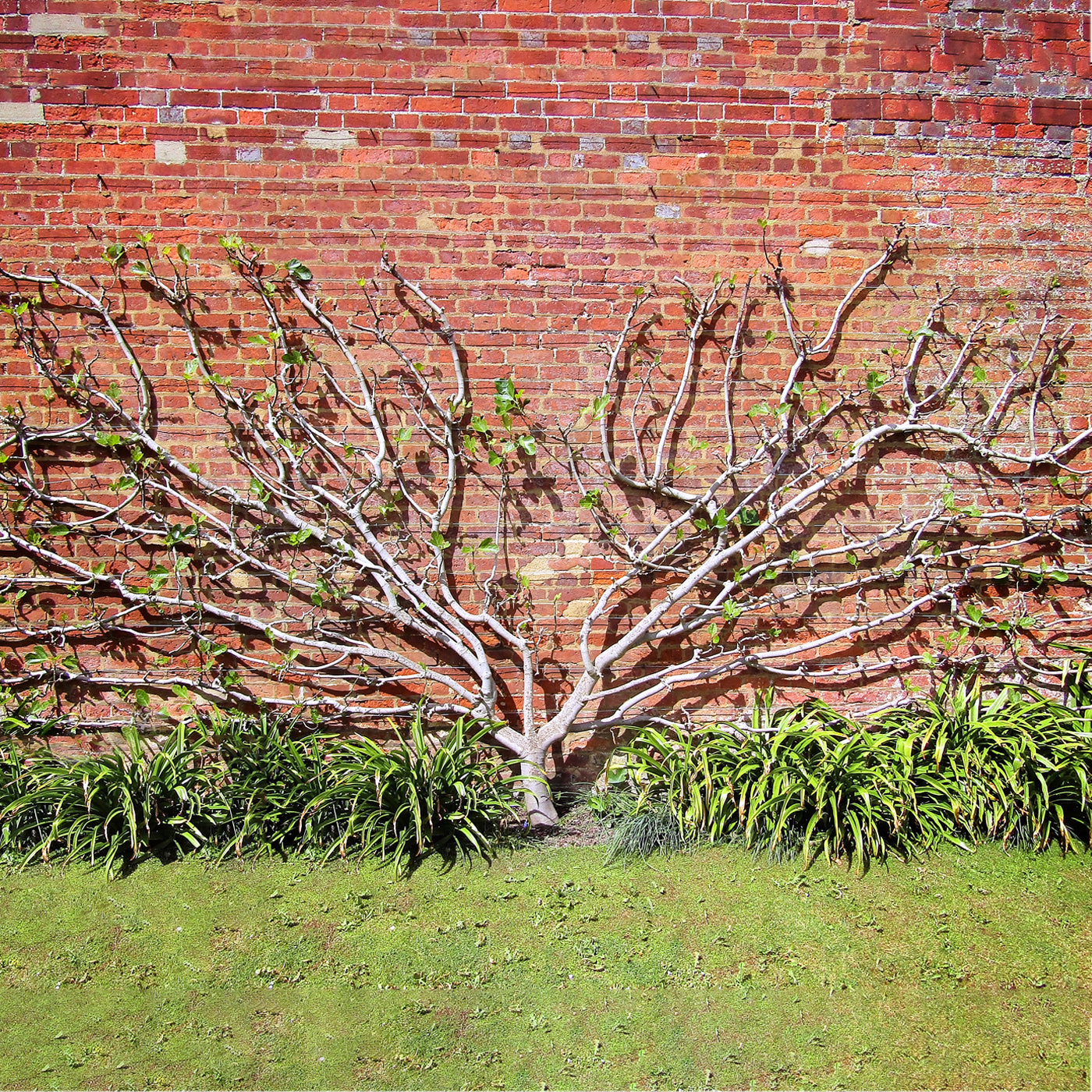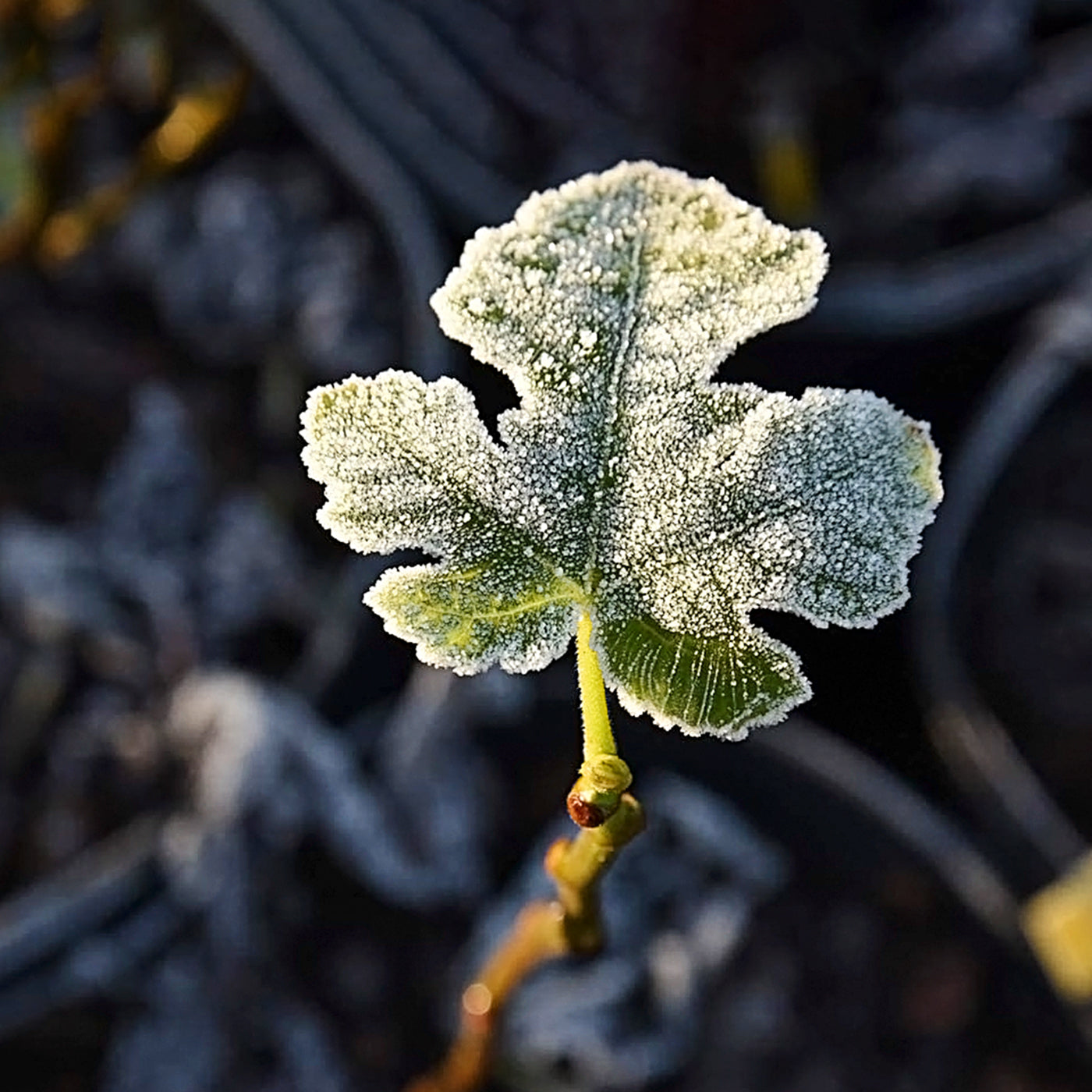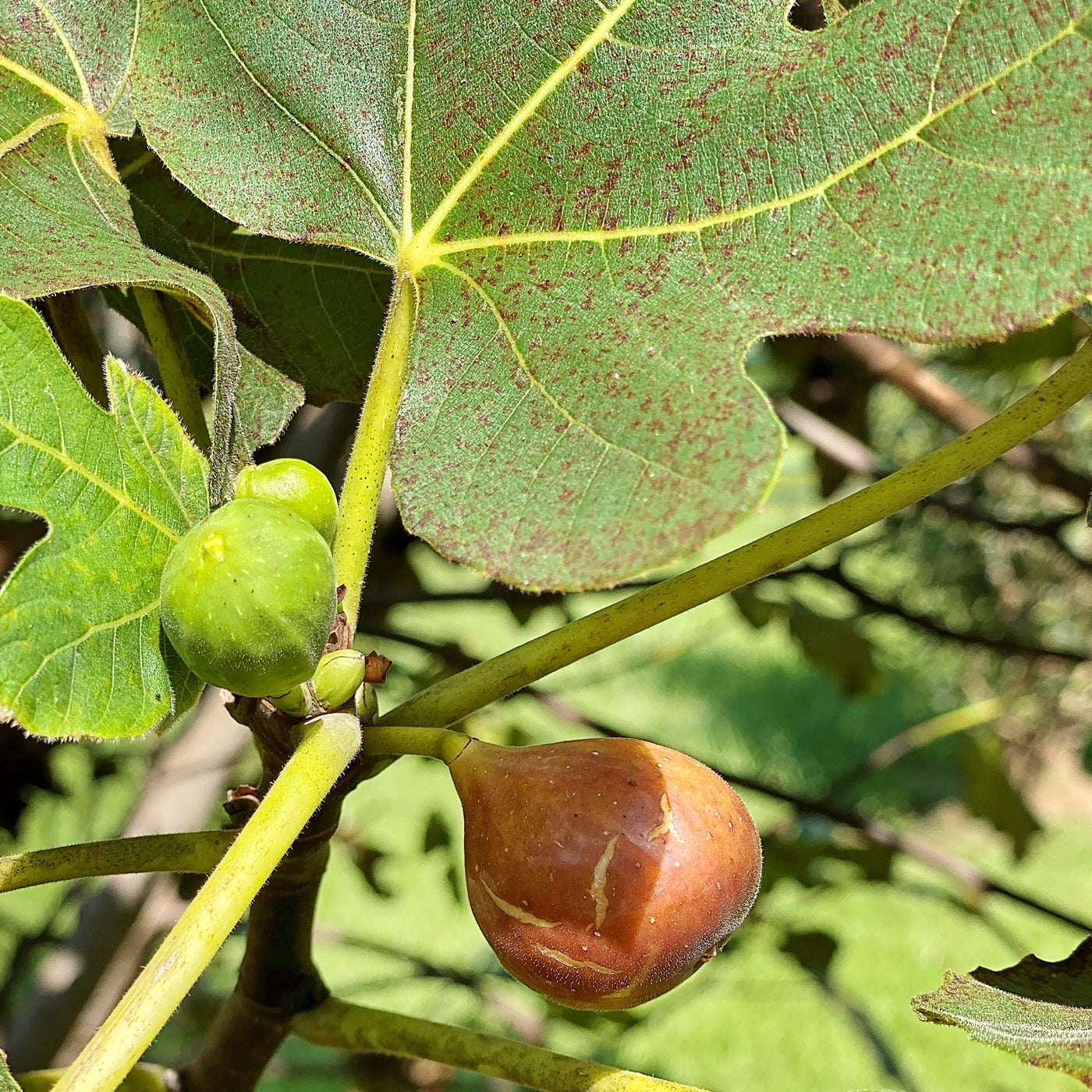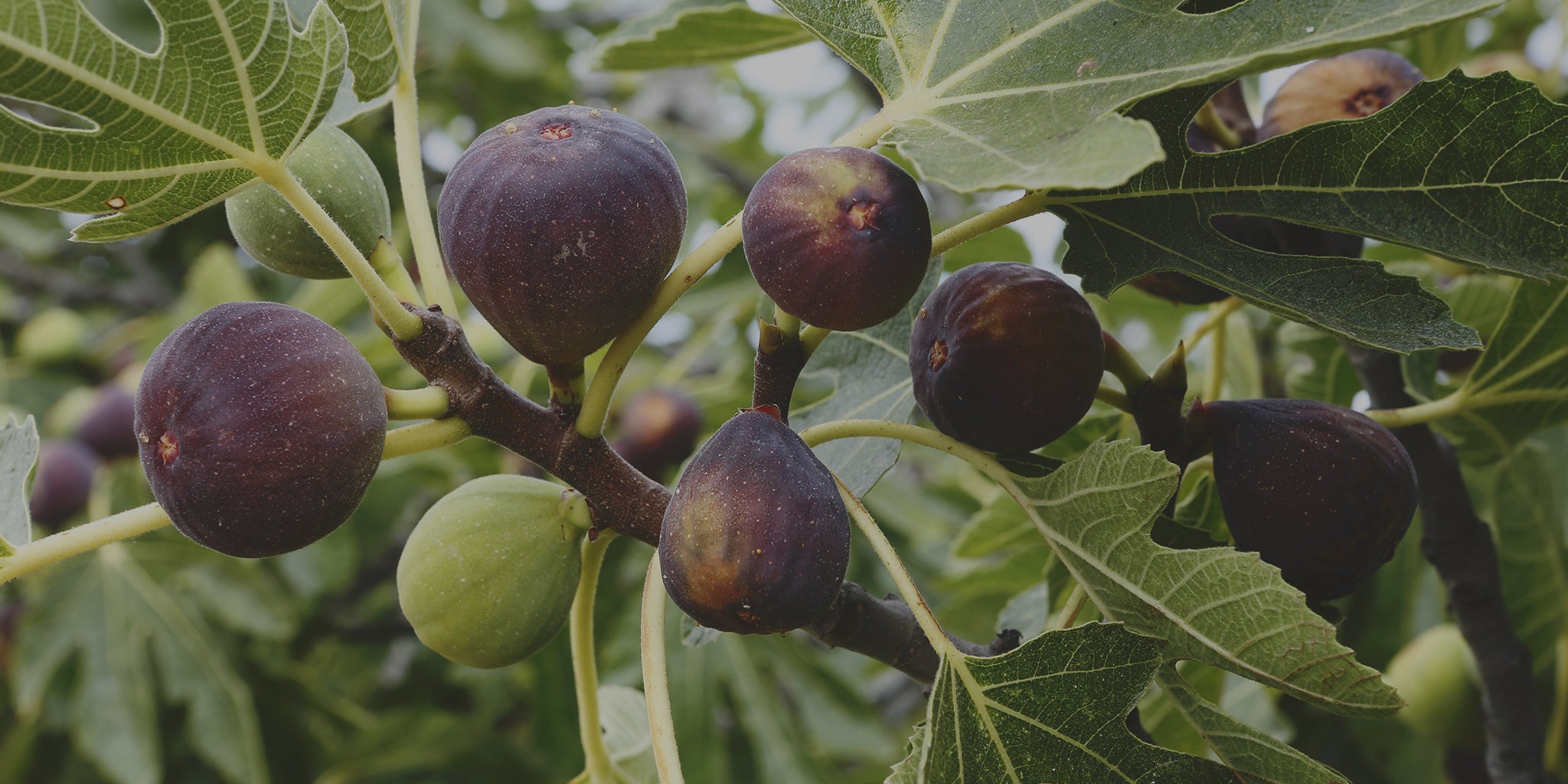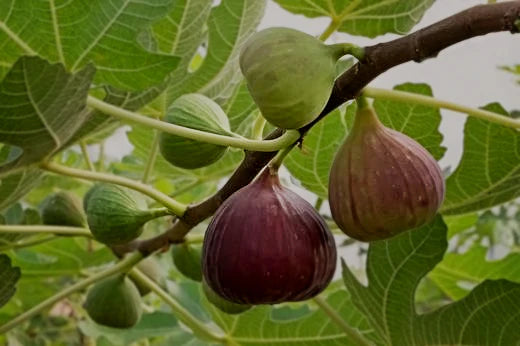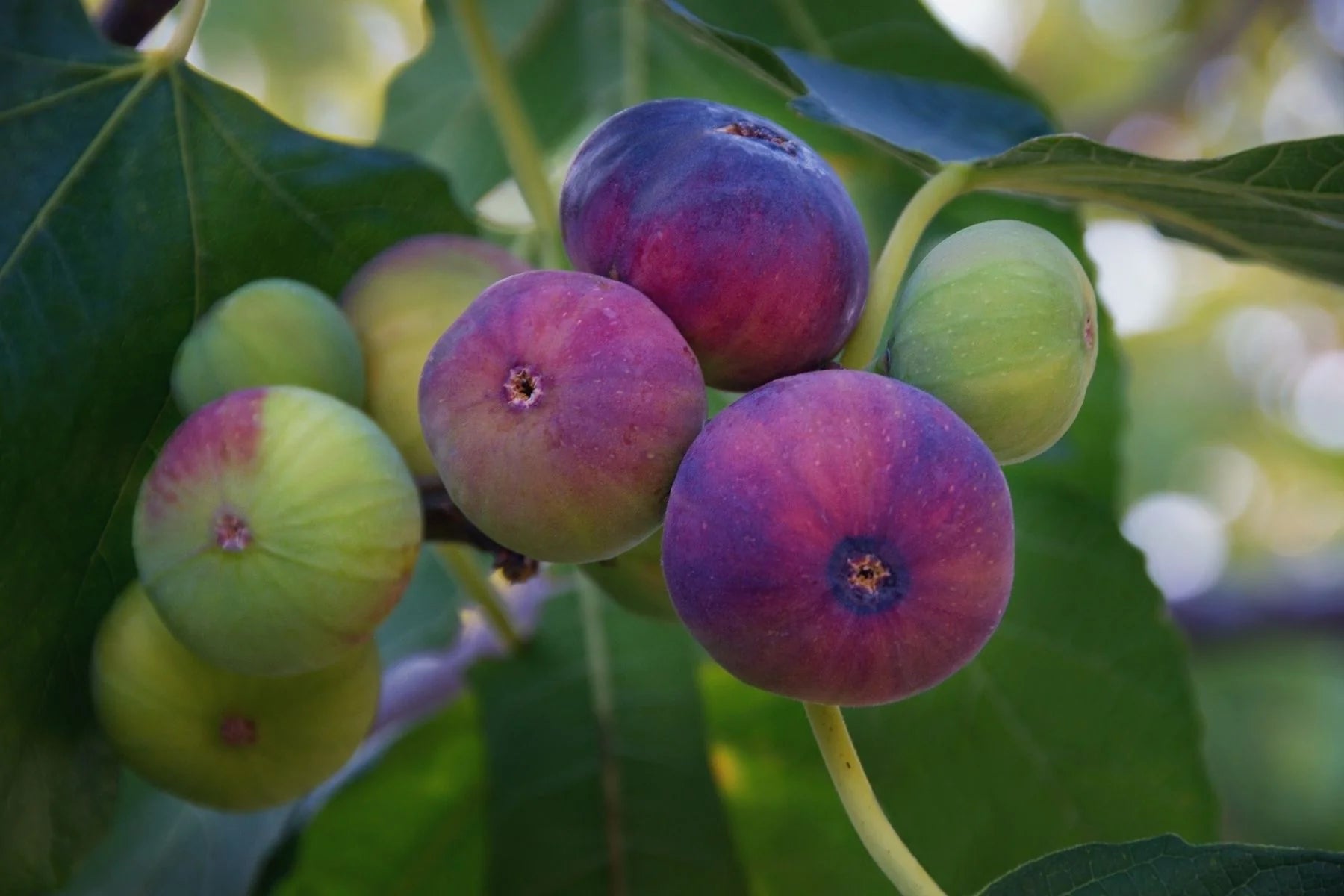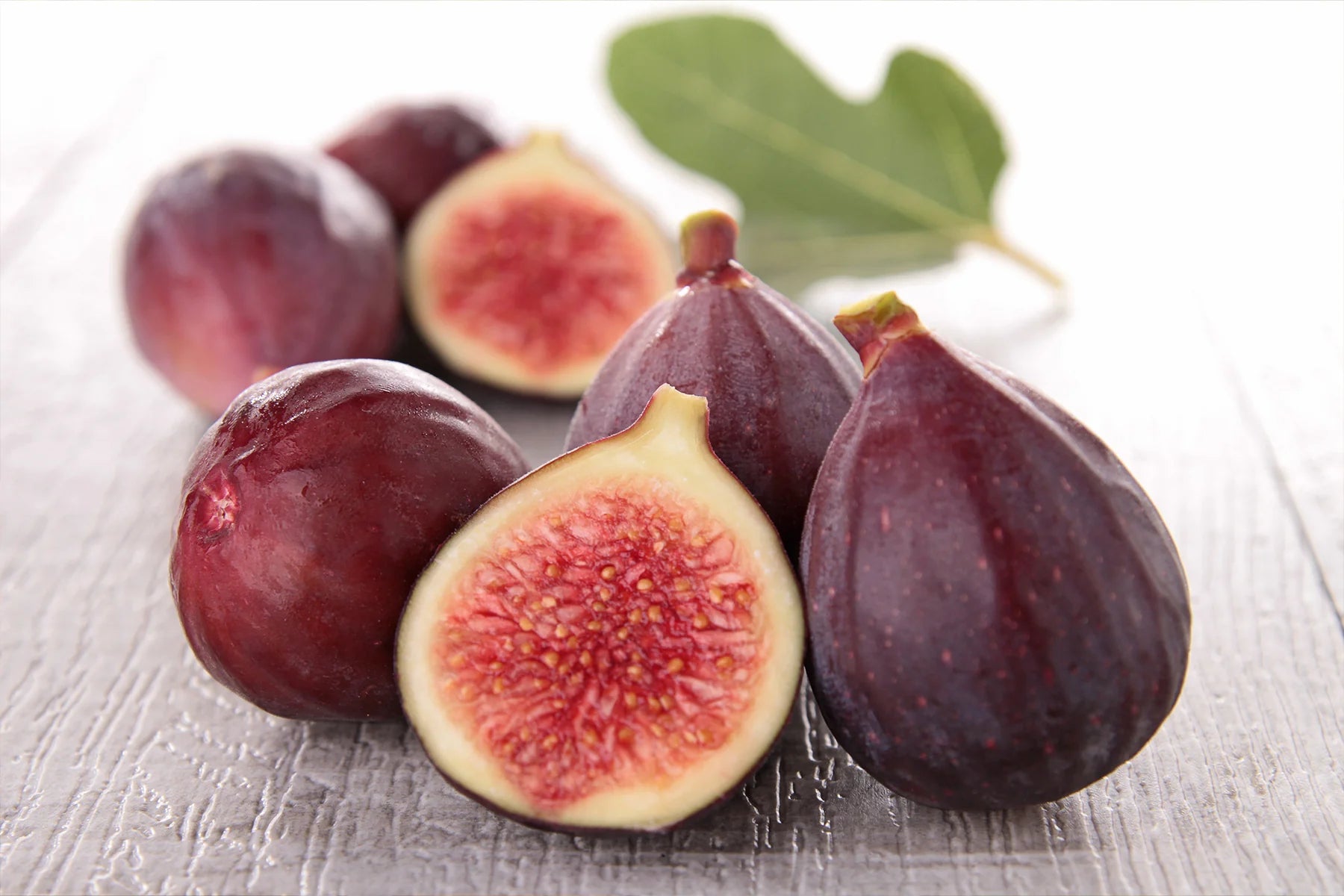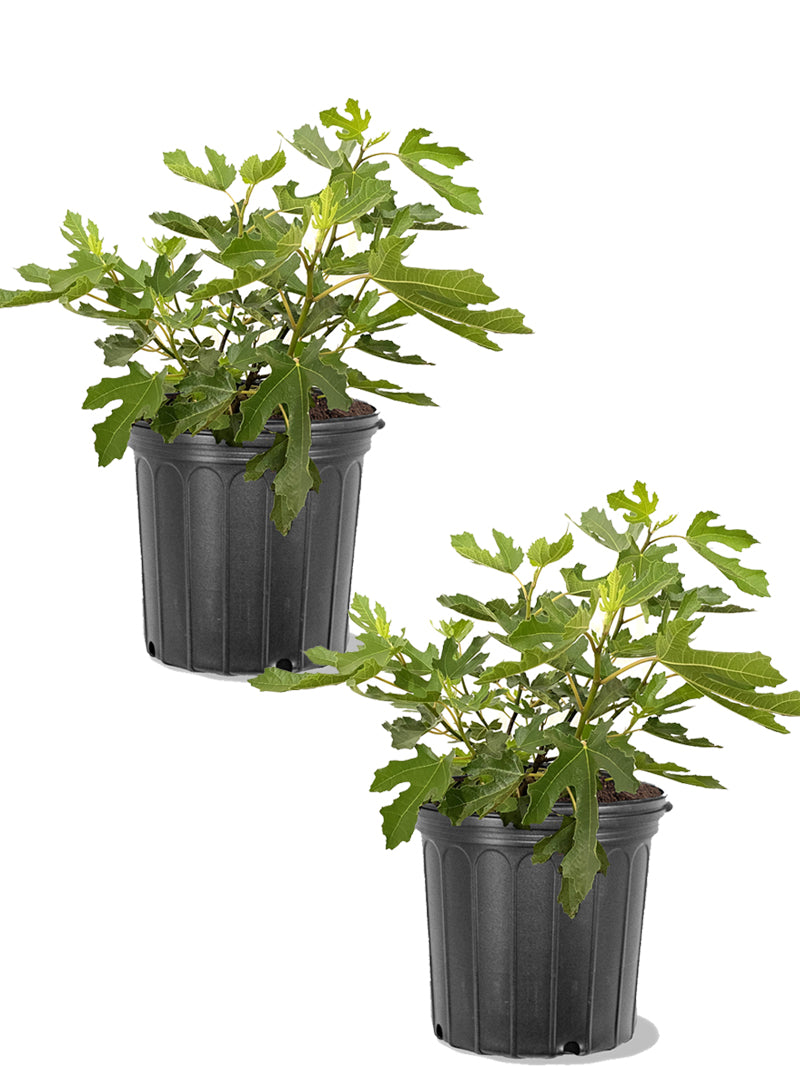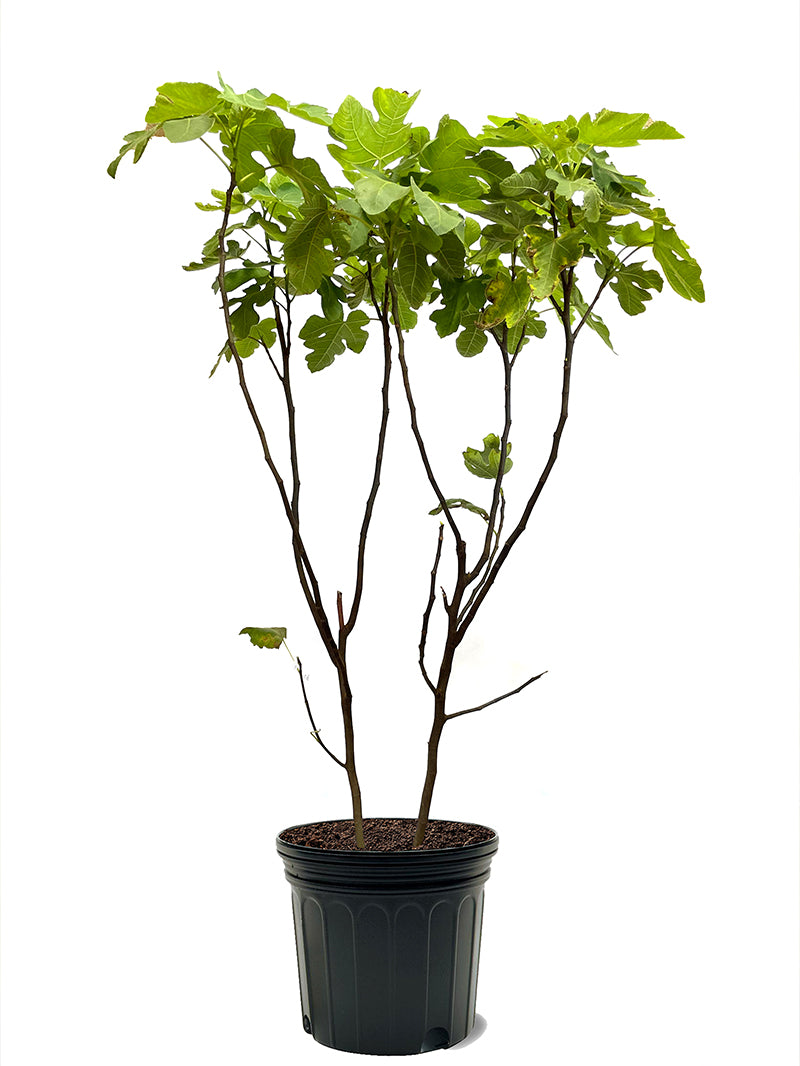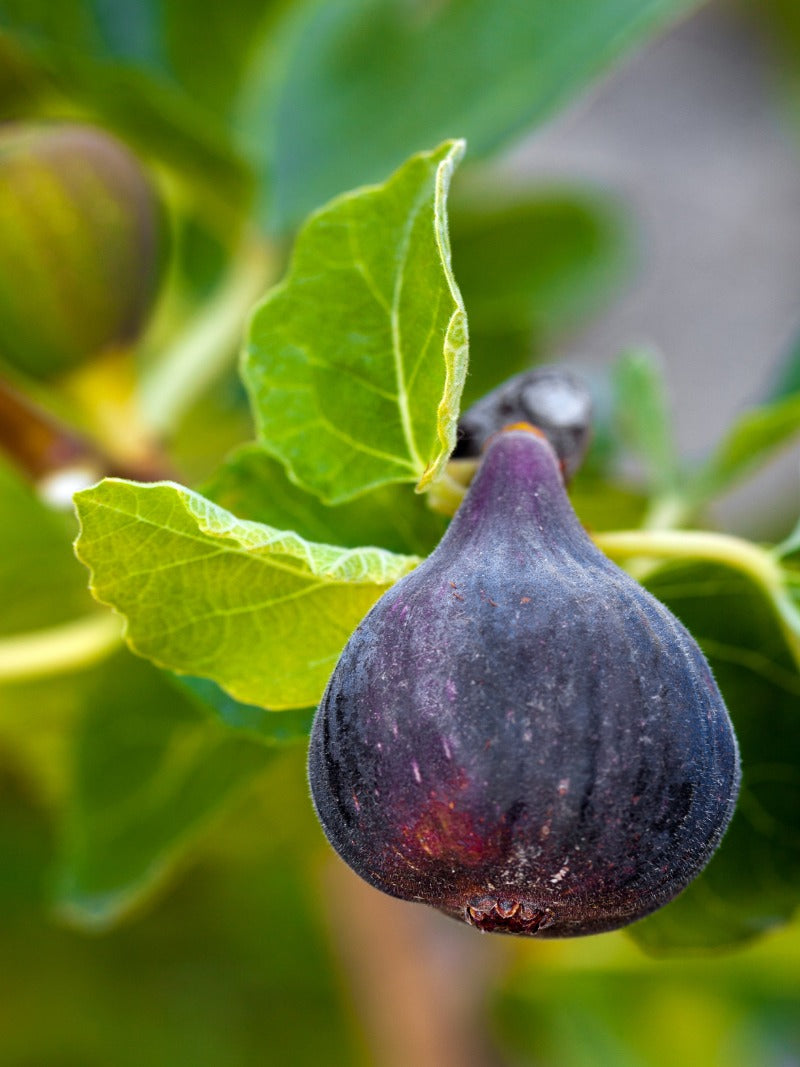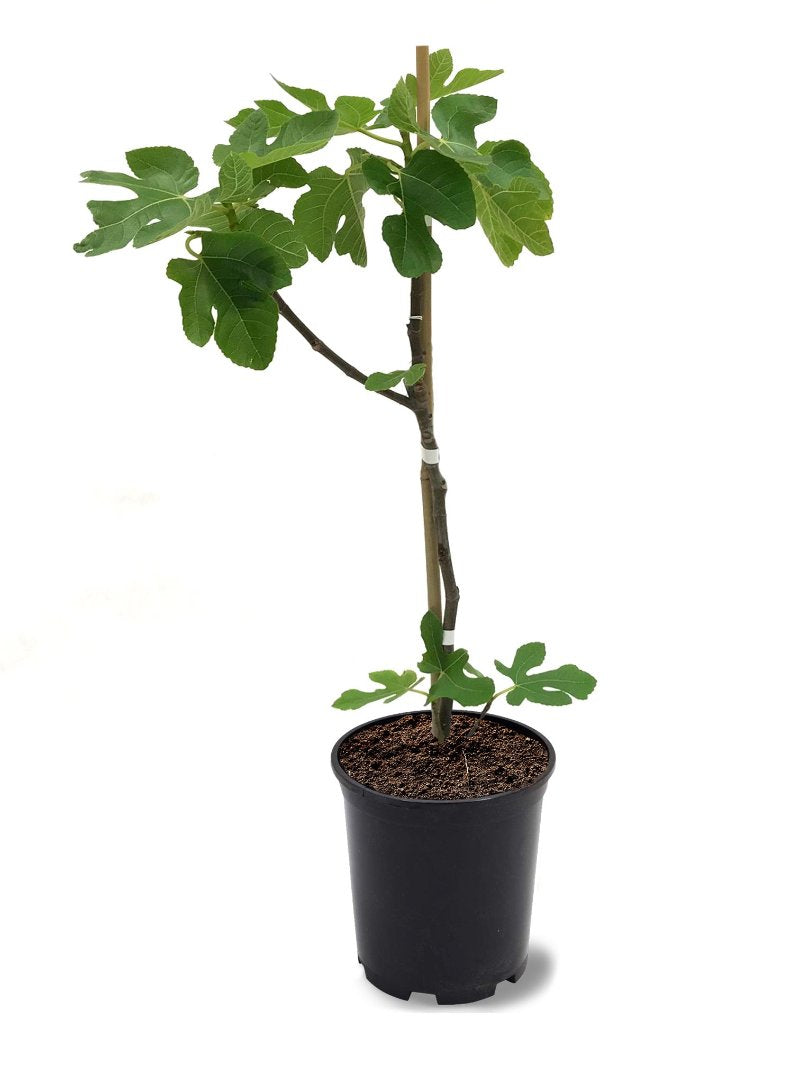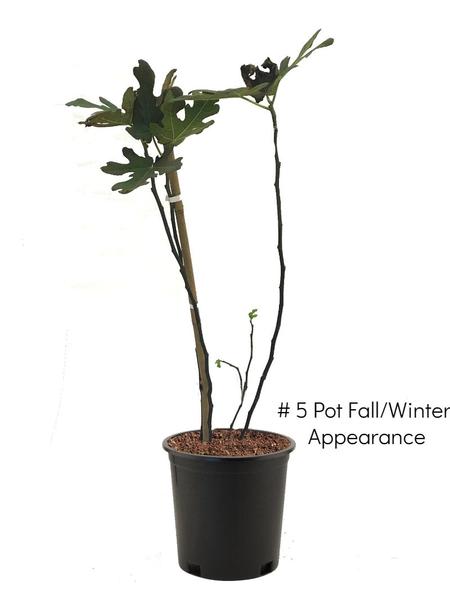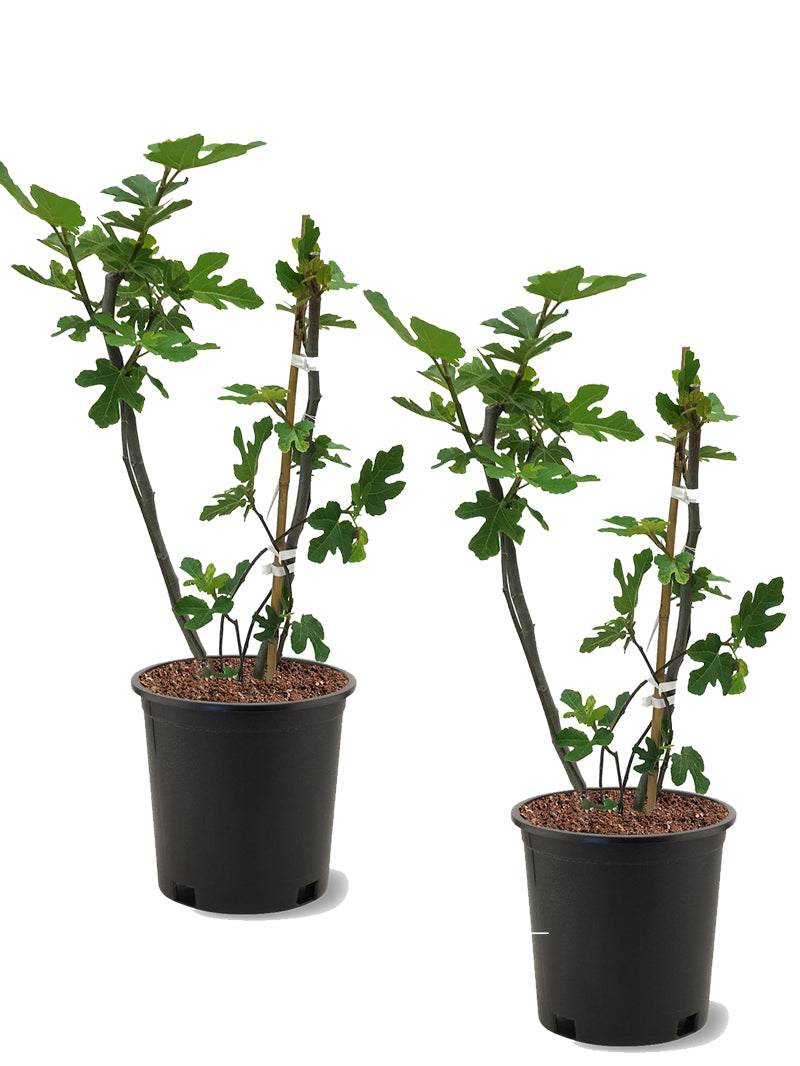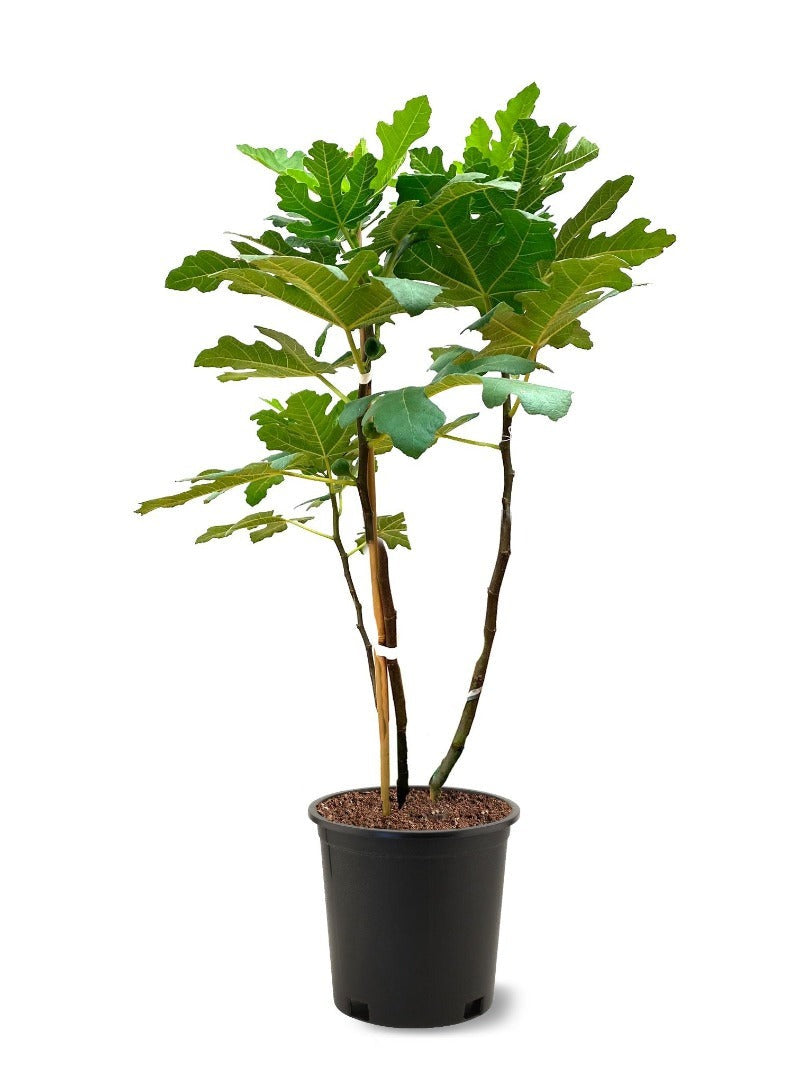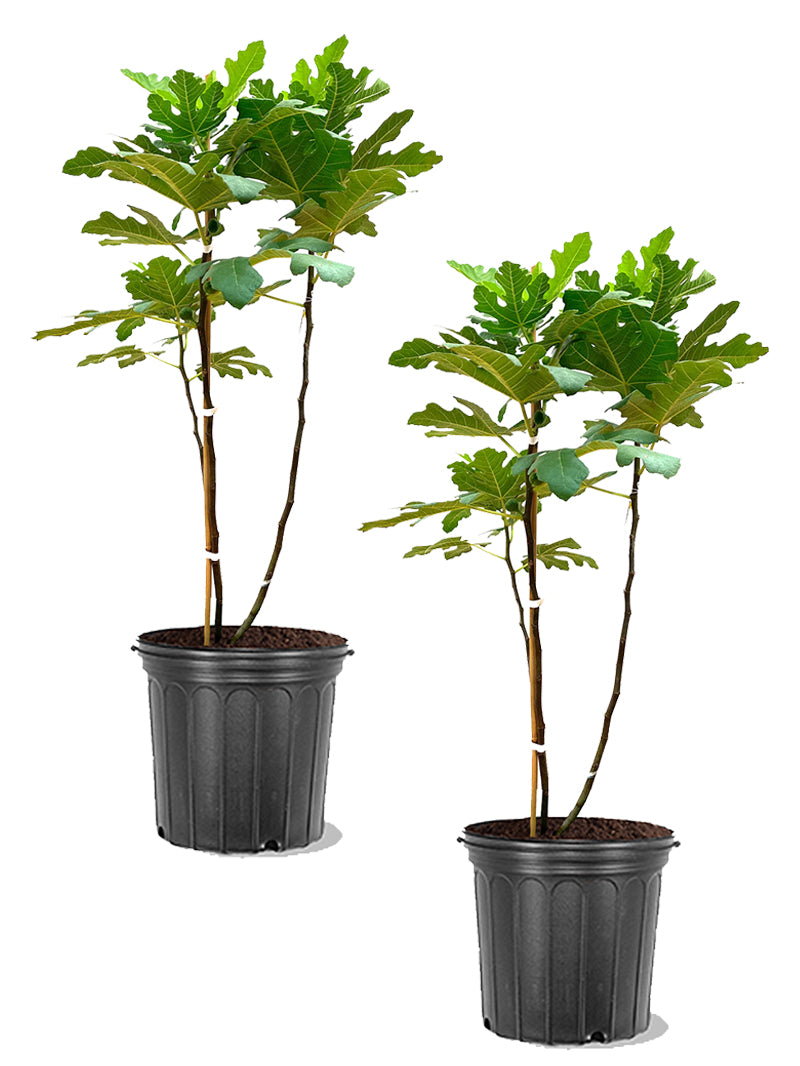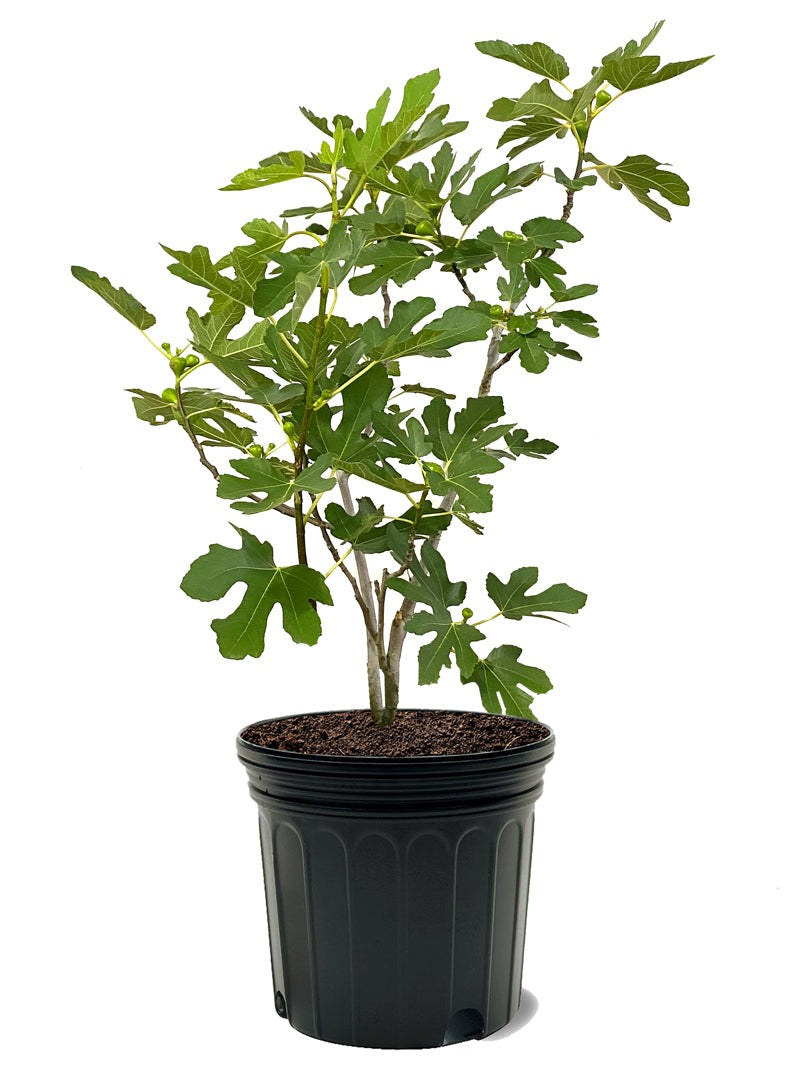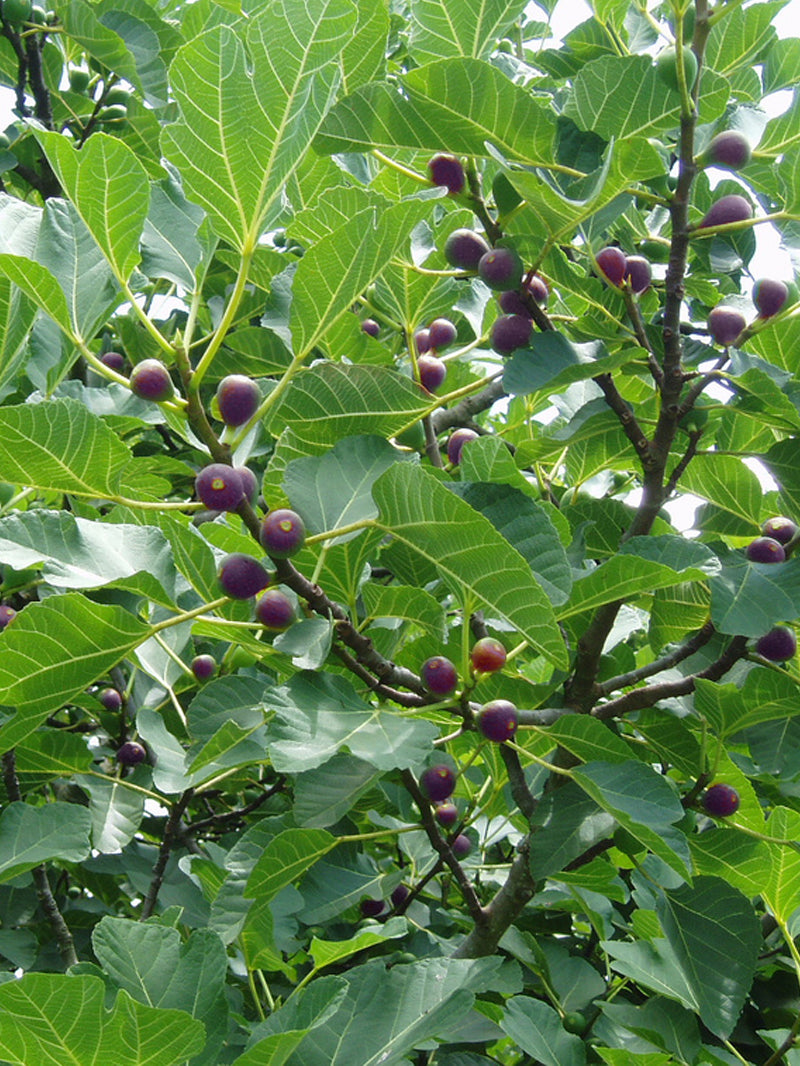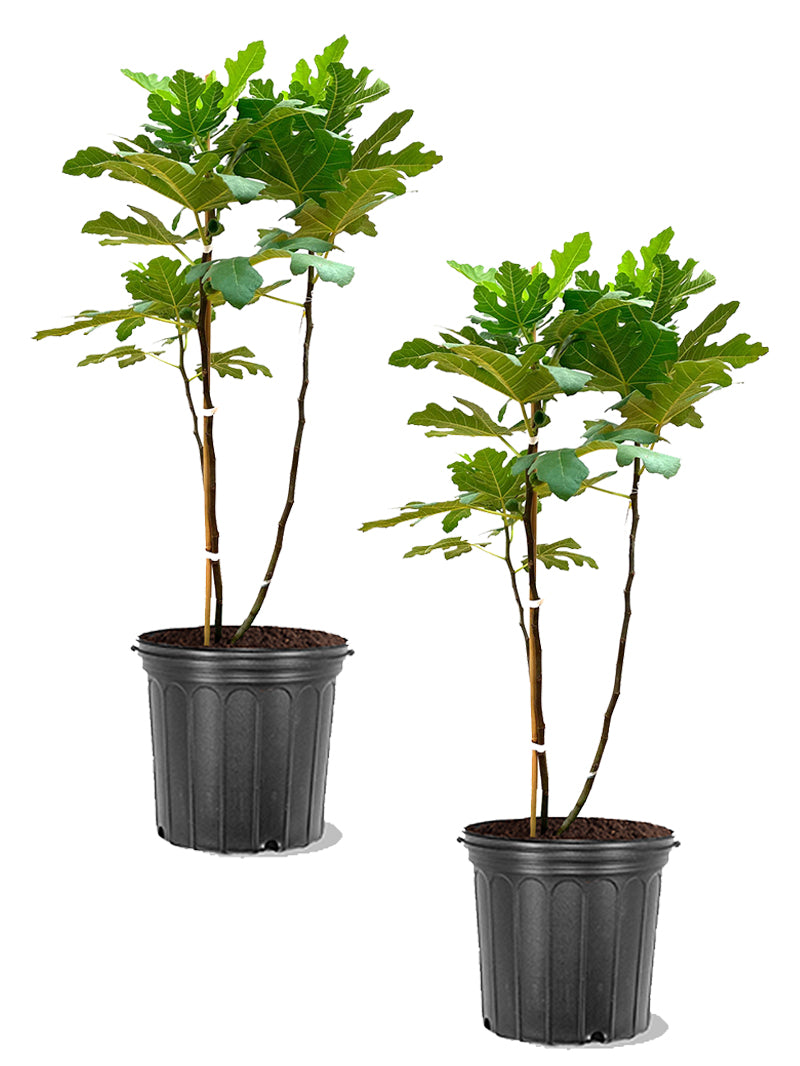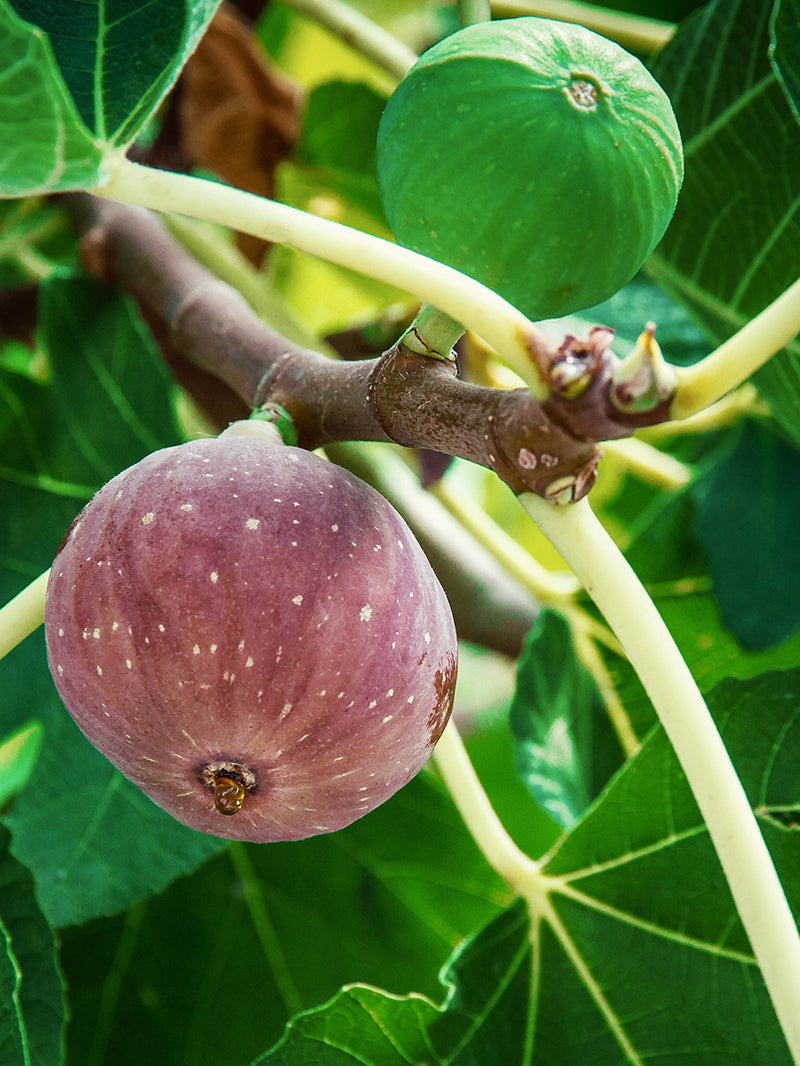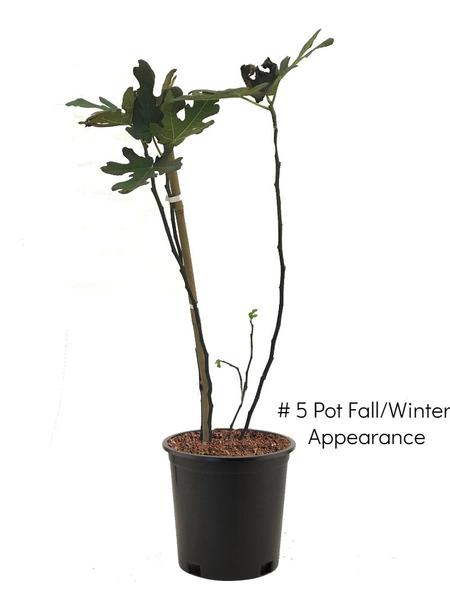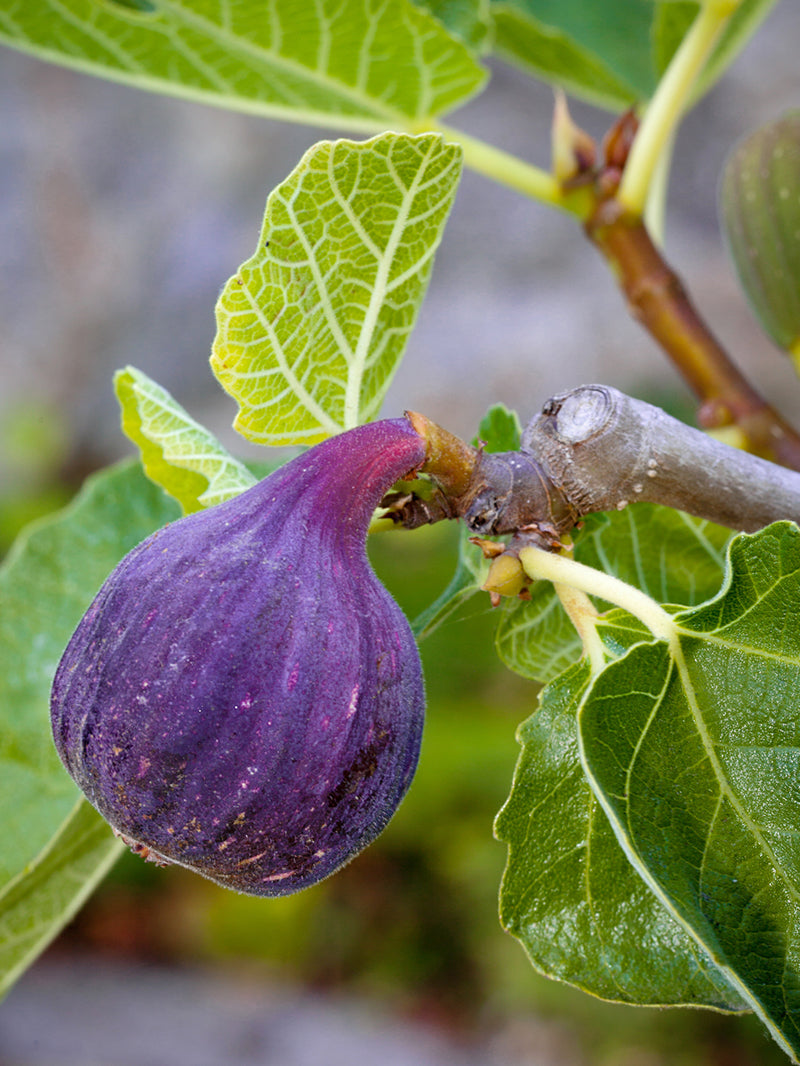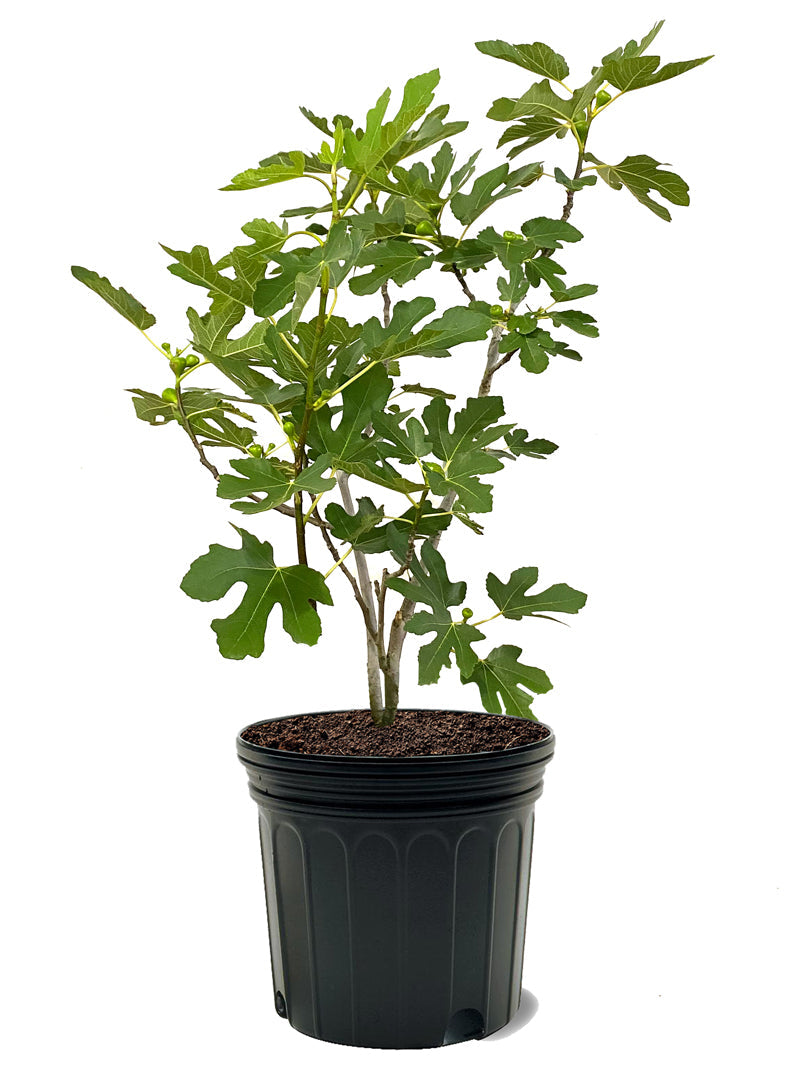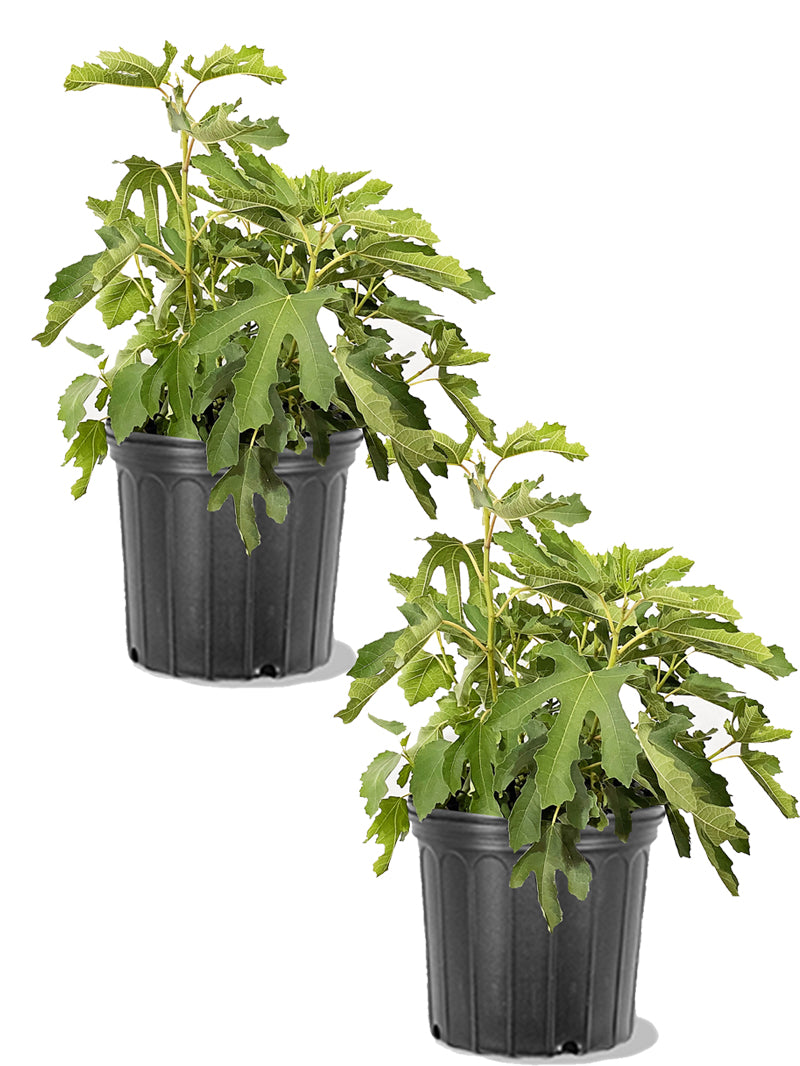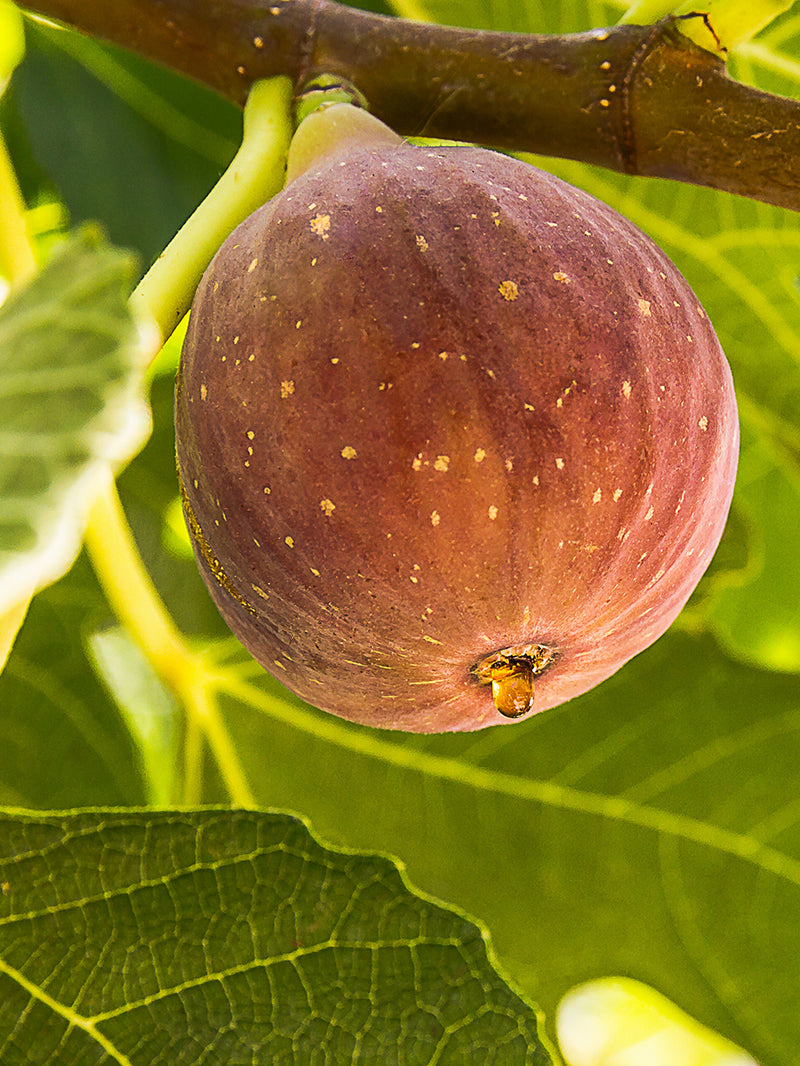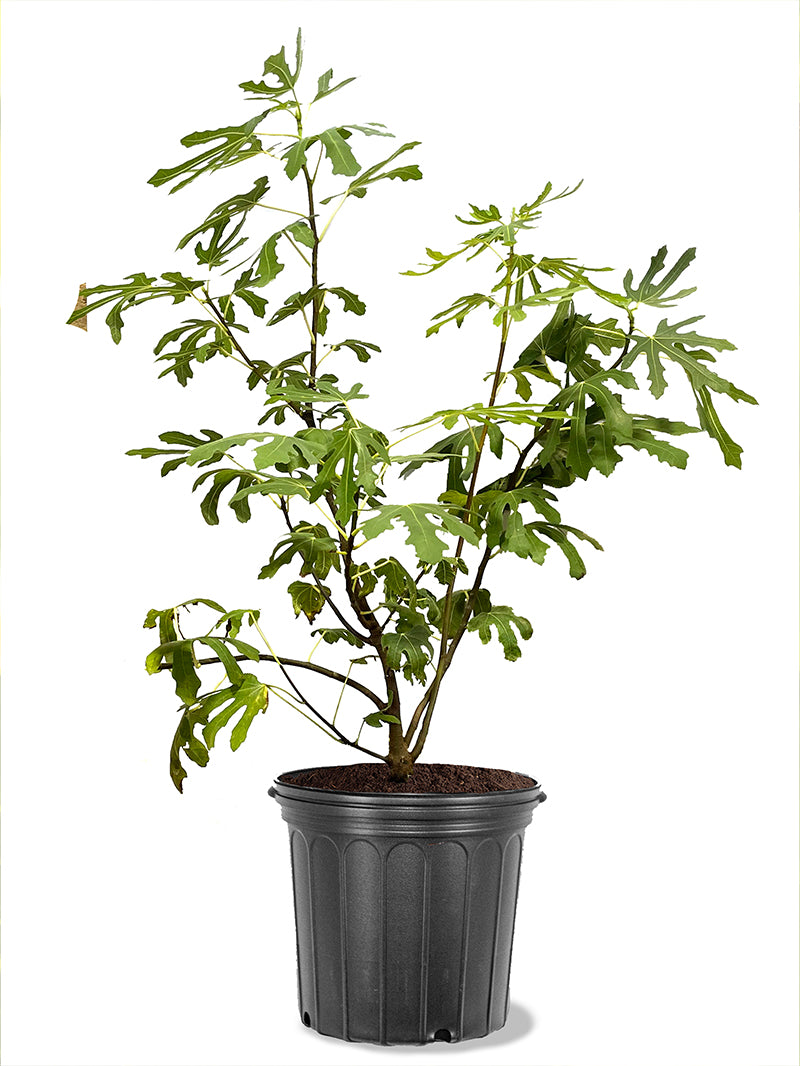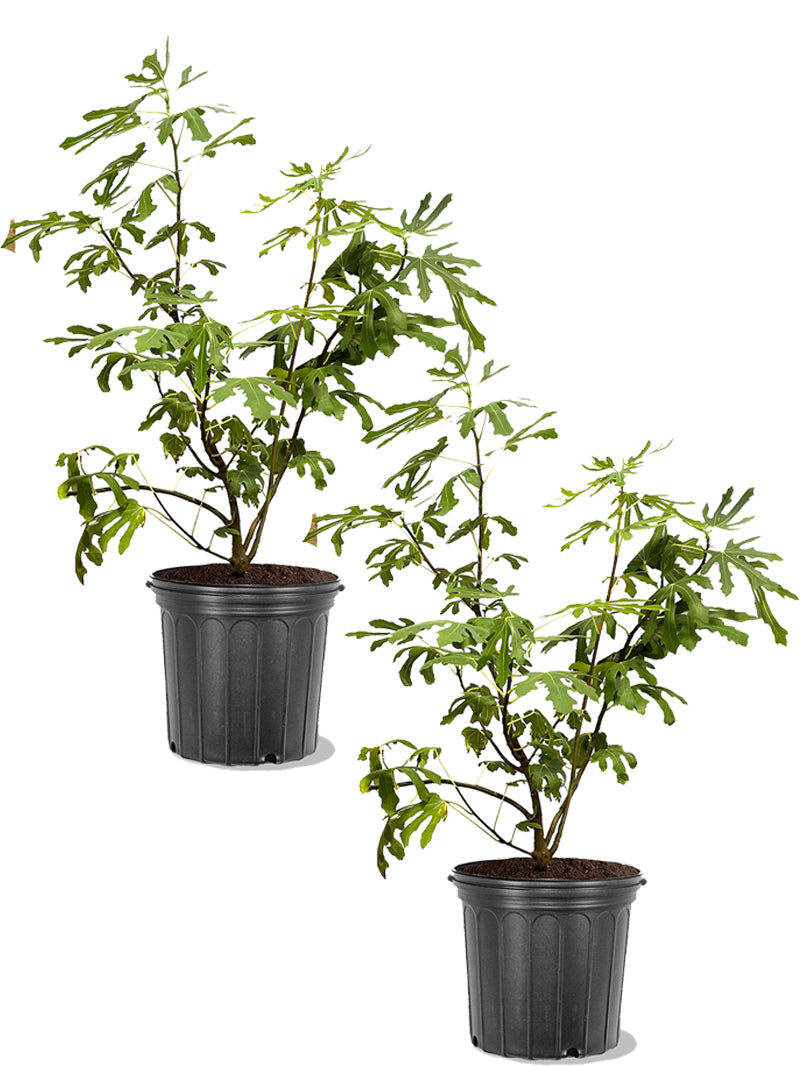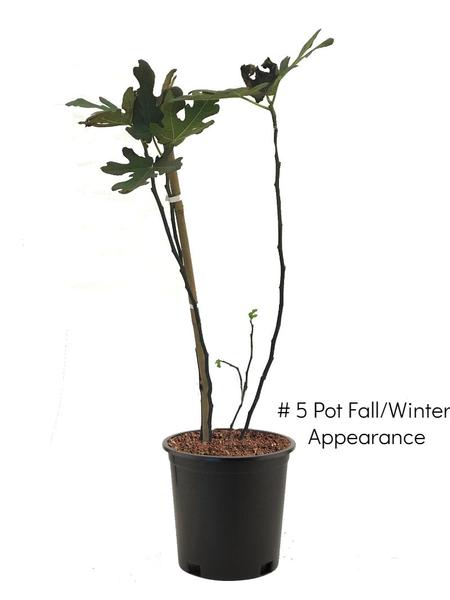
Planning your fig tree site
Figs are fun and fairly easy to grow, but there are a few important things to learn about fig tree care. When good drainage is provided figs can grow in a wide range of soil, but they need a site free of root-knot nematodes. For good fruit crops, and vigorous growth, plant in full sunlight. Cold injury will be further reduced if the fig does not receive direct sunlight early in the morning or late in the evening during the winter months. However, the site should receive a minimum of eight hours of sunlight daily during the growing season.
Soil Prep for Your Fig Tree
It’s time to start digging! First, you will need to dig a hole three times the width of the size of the pot, and just as deep as the root ball. Figs prefer slightly acidic soil (pH 5.5-6.5), but soils of moderate alkalinity are tolerated. Most average garden soils fall between a pH range of 6.0 to 7.0. Soil preparation should always include a pre-plant soil test. If your soil pH is low, adjust the pH with dolomitic limestone. Spread the limestone evenly over the entire area where the figs will be planted, then till the soil. If possible, till at least a 6-foot by 6-foot area where each bush will be planted at least 8 inches deep.
Fig trees grow best in well-drained, organically-rich soils, but they will grow on many other soil types and are tolerant of heavy clay soils if drainage is good. In soil with low fertility or compact clay it'll be worth your time to mix in some organic compost to the native soil. They like the soil to hold a good supply of water, especially when the fruits are developing in summer, but not so much water that the soil stays constantly soggy or wet.
Figs grown in the bush form may be set as close as 10 feet apart in the row and 15 feet apart between rows. Figs grown in tree form should be set 15 to 20 feet apart in the row and 20 feet apart between rows. Container-grown plants can be transplanted without being pruned; just remove them from the container, spread their roots, and set them in the planting hole. Fill the hole with soil; water heavily enough to settle the soil around the roots. Do not apply fertilizer in the hole at planting.
Figs respond well to mulching with organic materials. Mulch may reduce the effects of nematode problems.
Fertilizer for Fig Trees
Fig trees grow satisfactorily in moderately fertile soils with limited fertilizer. But fertilizer is needed in soils of low fertility or where competition from other plants is heavy. Though nitrogen is usually the only needed plant nutrient, other nutrients may be lacking in some areas. If poor growth indicates the need for fertilizer, feed your tree. Fig trees can be fed with organic plant foods or inorganic fertilizers, such as 10-10-10.
WHEN TO FERTILIZE FIG TREES:
In USDA Zones 8-9: Fertilize 3x a year— in late February, late May and late July/early August.
In USDA Zones 6-7: Further north, fertilize 1x a year in March or after the buds break. This will probably cause early fruit drop, but growth is more important at this stage on their development.
ALL USDA Zones: NEVER fertilize after August as this will start new growth too late in the year and lead to frost damage.
Thereafter, on established trees, apply fertilizer or an organic plant food such as bloodmeal, cottonseed meal, alfalfa meal or fish emulsion, when new growth begins to emerge in spring. An additional application of organic plant food can be applied in late spring or early summer. Spread the fertilizer evenly under and around the perimeter of the branches. Follow application instructions on the product label.
|
10-10-10 or 8-8-8 with minerals |
Newly planted: 1½ ounce of fertilizer Second-year fig: 3 ounces at each application 3 to 5 year fig: 1/3 pound per foot of bush height per application Mature fig 6+ years: On bushes spaced 10 feet apart, apply ½ pound of fertilizer per foot of height, up to 5 pounds per year. On bushes spaced 20 feet apart, apply 1 pound of fertilizer per foot height, up to 10 pounds per year. |
|
Espoma Citrus Tone (Organic) |
6 cups for 1 year old (up to 3 ft) 12 cups for 2 year old (4-6 ft) 18 cups for 7-9 ft tree 24 cups for tree over 9 ft |
Water For Fig Tree
The first year is a critical time for your new fig. For highest yields, figs need watering throughout the summer. The frequency and the amount of water depends to a large extent on the soil. As a rule of thumb, 1 to 1½ inches of water per week from rain or irrigation is adequate. Yellowing and dropping of leaves may indicate drought or over-watering.
In lawns, the grass beneath fig plants may wilt in the heat while the rest of the lawn does not. This indicates the figs need water. Figs grown with lawn grasses may require one or more waterings a week during hot, dry periods.
Once the tree is established, it should receive at least one inch of water each week. After the first year you don't need to be quite as vigilant as the tree will have established its root system. Water regularly, especially during dry spells. Lack of rain/water can cause fruit to prematurely drop or quality to suffer, if not well irrigated during the dry spell. Keep at least 4 feet around the fig clear of grass and weeds, for less competition for water. Figs respond well to mulching with organic materials. Mulch may reduce the effects of nematode problems.
Pruning Fig Trees
Fig trees can be left alone to grow naturally or trained to grow as a large shrub or mid-size trees of various shapes.
It is not absolutely necessary to prune a fig tree. However, you can prune young fig trees during the first couple of years in a manner that will produce new "fruiting wood," resulting in heavier yields of fruit the following season. Figs are produced each active growth season on "old wood" (branches produced the previous season). So, to produce more fruit in future seasons you need to produce more branches.
Although fig plants can be trained to either tree or bush form, the tree form is not practical for the northern regions. In these zones, fig plants are frequently frozen back to the ground, making the tree form difficult to maintain. In the bush form, more of the fruit will be closer to ground level and easier to pick.
Tree Forming a Fig
Where winters are mild, you can train your figs to grow as a tree. To develop a single or multi-trunk tree, the process must be started when the tree is very young. Choose 1 to 3 trunks you would like to keep and remove the rest, cutting them off as low as possible. Then carefully select and remove horizontally-growing lower branches that won't effect the canopy of the tree. As your fig tree grows, remove lower branches as needed to maintain a desired height and form. To keep your fig in tree form, it may be necessary in following years to remove suckers that grow from the base or secondary branches that grow downward.
How To Espalier a Fig Tree
Espalier is a technique for growing plants against a flat, vertical surface, such as a wall of a home or other building. Among the benefits is an abundance of fruit in a relatively small space. Figs are particular good for espalier because they have flexible branches when young, and they produce fruit when very young. You have many formal shapes in which you can grow the fig tree as espalier: candelabrum, double U-shape, fan shape. But a simple stack of three horizontal tiers emanating from the tree’s base is simple enough.
The espalier process is simple:
Step 1: Though you certainly could build your own support structure, first-timers might simply want to buy a strong trellis with a nice design and horizontal bars. Install your trellis against a wall. Alternatively, you could attach coated wires to the wall to attach branches to.
Step 2: Plant your fig in the middle of the trellis and allow it to grow.
Step 3: As new branches emerge, gently bend them to the shape of your choosing and loosely tie them to the bars of your trellis using plastic tie tape available at your local nursery and garden center.
Step 4: In the fall when the leaves fall off, remove any weak and crowded branches or stems. You want there to be some space between the branches you keep, unless you want a solid form.
Step 5: During each dormant season thereafter, continue to cut back the overgrown portions. and the top or sides of the tree to a desired shape and size.
Frost Protection of Fig Trees
Very young trees can be damaged or killed at temperatures 25˚F and below. For the first year, please cover your plants. This is even more important in trees that enter dormancy or which have begun growth in the spring. If an established tree sustains frost damage wait till growth has resumed in the spring to asses injury and remove dead limbs. With age, the tree will develop a certain degree of cold tolerance.
For all zones 7 and above, figs must be protected for winter cold. Protect the base of the plant by mulching 6”-12” with leaves, straw, or other organic materials. Cover them with burlap, canvas, row cover, a quilt, or other available breathable wrapping (not plastic) to protect from the wind. Encase the whole tree in cardboard. Then tarp to keep moisture out, leaving room at the bottom for air to circulate. Remove the enclosure and mulch in the spring after it starts to warm.
If you have decided to keep your plant in the pot, still be careful, because they are also subject to frost damage since the roots are above ground. Container figs should be kept at or above 25˚F during winter. Place containers in an insulated unheated preferably dark room, garage or cool basement. If the space is not dark, you can cover the figs. If you’re lucky enough to have an environmentally controlled greenhouse, you may not need to cover them. Water them monthly until just moist so the roots do not dry out completely. Do not overwater. Figs require a minimum of 100 hours of chilling in order to produce fruit. So you do not want to keep them toasty. You want them to remain dormant until spring. Bring outdoors in April.
FIG TREE INSECT & DISEASE CONTROL
In sandy soils you may develop a root knot nematode problem. The nematodes will weaken the fig and may cause you to have a poor growing plant, or produce little to no fruit. One way to tell if you have nematodes would be to check the roots, the will develop small knots. To help prevent nematodes, try a heavy mulch and large amounts of organic matter in the soil at the time of planting. The most common insect pests are mealy bug, three-lined fig borer, and ants. The application of insecticide is seldom warranted.
In rainy seasons or humid environments, fig rust can become a problem. This will show up as a rust colored brown discoloration on the leaf, resulting in early leaf fall. This disease can be controlled by a 5-5-50 Bordeaux spray (copper sulfate, lime, and water) applied every two to three weeks during the growing season, from April to November. In addition, rake and burn fallen leaves in the fall to remove the fungal spores that might re-infect the tree the following year. Although many diseases attack figs, most figs are grown in homeowner settings and do not receive pesticide sprays. Please contact your local Agricultural Extension agent for spray recommendations.
Blog: FIG Care Articles
Must-Know Tips for Winterizing a Fig Tree
Fig trees can be a little sensitive to the cold, so you need to take extra-good care of them in the winter. Here are some tips for protecting your fig tree.
Fig Tree Maintenance: What Do Fig Trees Need To Survive?
Learn about fig tree maintenance before you start planting a field of them. Find out what fig trees need to survive in any climate or region.
Shop our collection of fig trees and have them shipped right to your door!


